
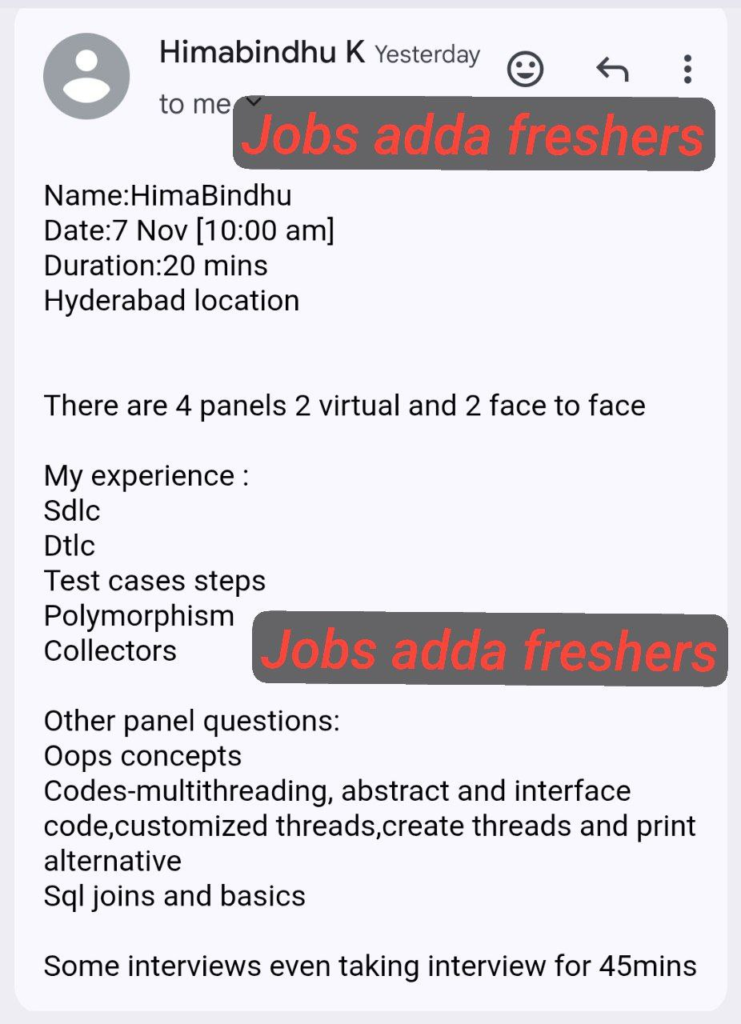
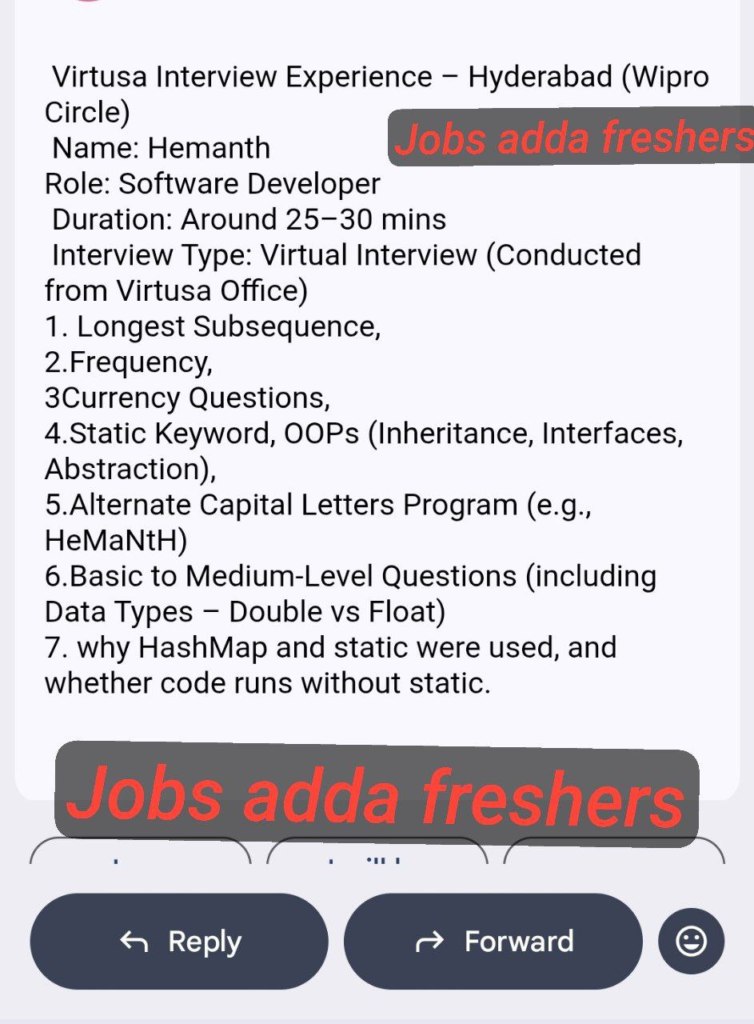
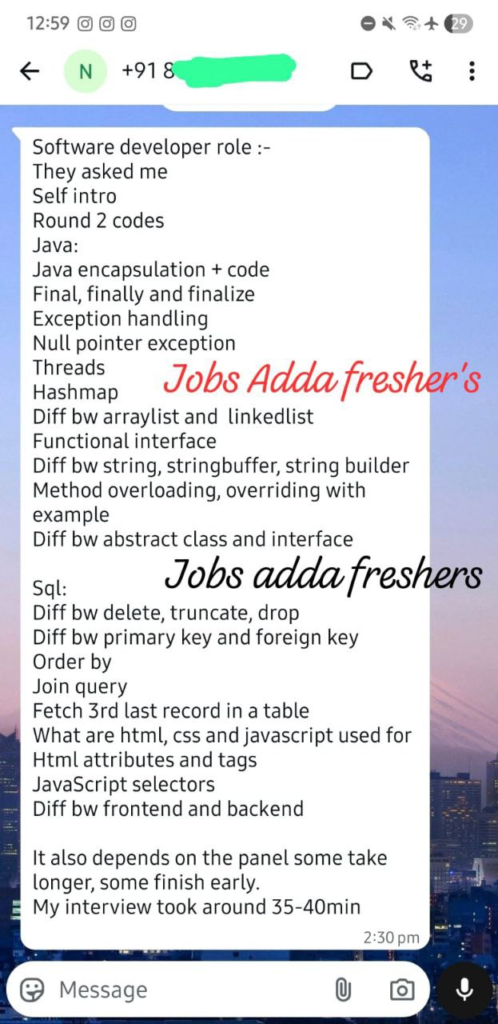
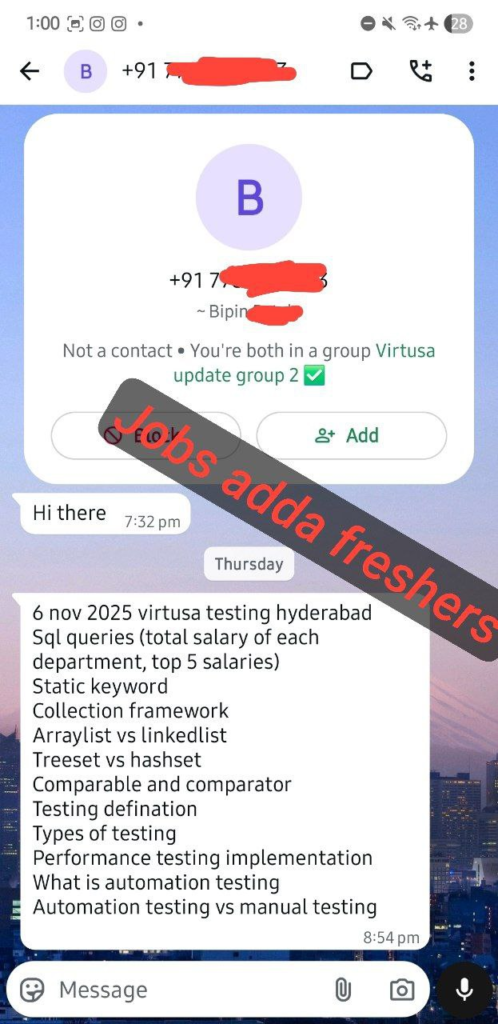

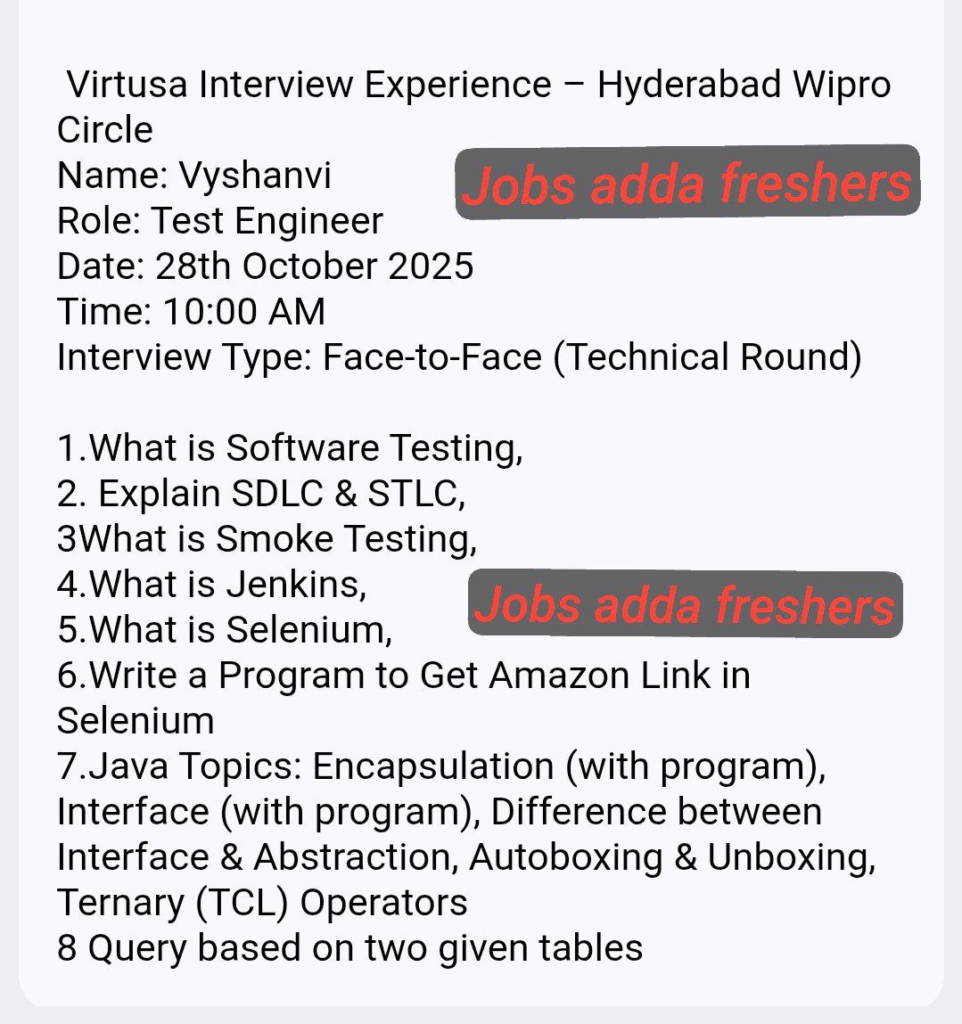
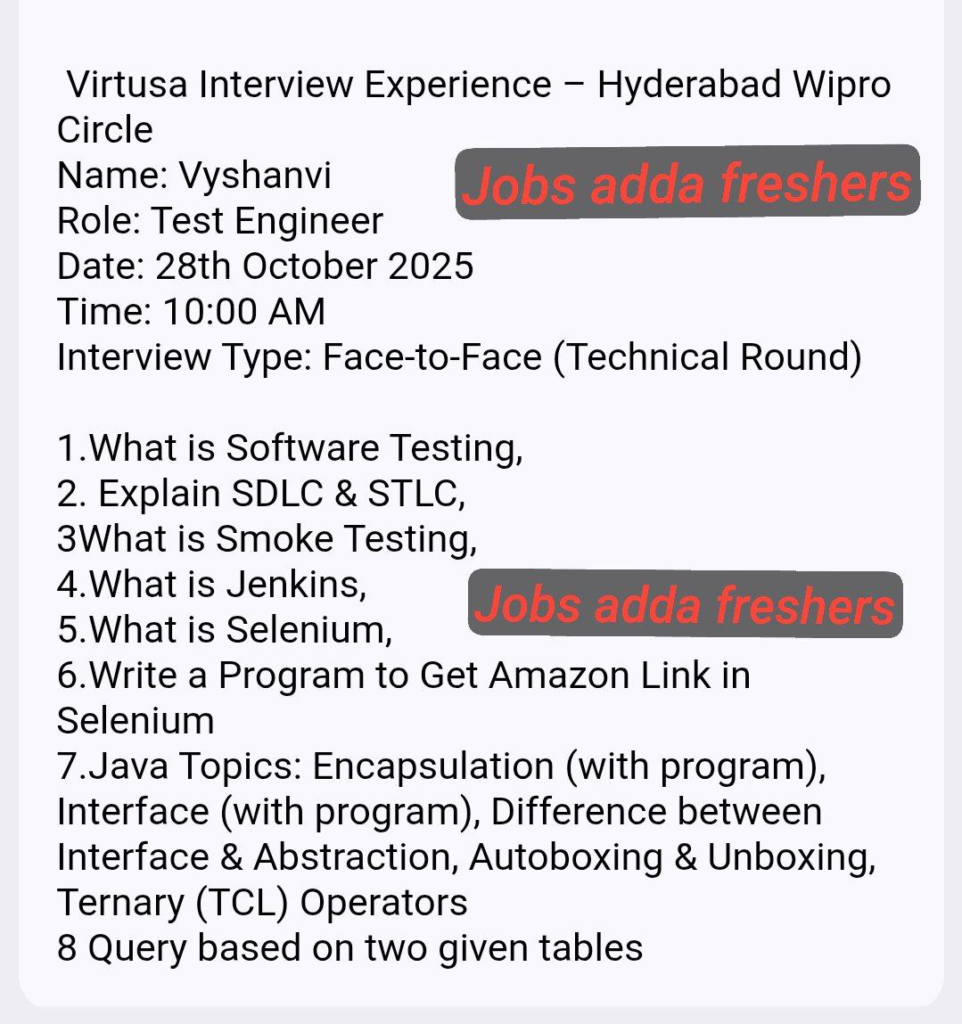
Q1: What is Software Testing?
Answer: Process of verifying that software meets requirements and is defect-free.
Q2: Verification vs Validation?
Answer: Verification: built correctly; Validation: right product built.
Q3: Levels of Testing?
Answer: Unit, Integration, System, Acceptance.
Q4: Types of Testing?
Answer: Functional and Non-functional.
Q5: Smoke vs Sanity Testing?
Answer: Smoke: basic check; Sanity: new feature check.
Q6: Regression Testing?
Answer: Re-testing unchanged areas after modifications.
Q7: Retesting?
Answer: Re-executing test cases to confirm bug fix.
Q8: Exploratory Testing?
Answer: Testing without predefined test cases.
Q9: Positive vs Negative Testing?
Answer: Positive: valid data; Negative: invalid data.
Q10: Test Scenarios vs Test Cases?
Answer: Scenario: high-level; Case: detailed steps.
Q11: What is a Test Plan?
Answer: Document describing objectives, scope, approach of testing.
Q12: Severity vs Priority?
Answer: Severity: impact; Priority: urgency.
Q13: QA vs QC?
Answer: QA: process-focused; QC: product-focused.
Q14: Requirement Traceability Matrix?
Answer: Maps requirements to test cases for coverage.
Q15: Ad-hoc Testing?
Answer: Informal, unplanned testing.
Q16: STLC?
Answer: Requirement Analysis -> Test Planning -> Test Case Design -> Environment Setup -> Execution -> Closure.
Q17: Defect Life Cycle?
Answer: New -> Assigned -> Open -> Fixed -> Retest -> Verified -> Closed.
Q18: Who logs defects?
Answer: Tester logs in tools like JIRA/Bugzilla.
Q19: Defect Statuses?
Answer: New, Assigned, Fixed, Verified, Closed, Rejected, Deferred, Duplicate.
Q20: Entry & Exit Criteria?
Answer: Conditions to start or end testing.
Q21: Static vs Dynamic Testing?
Answer: Static: no execution; Dynamic: code executed.
Q22: Test Deliverables?
Answer: Test Plan, Test Cases, Test Summary, Defect Reports.
Q23: Boundary Value Analysis?
Answer: Testing boundary input values.
Q24: Equivalence Partitioning?
Answer: Dividing input data into valid/invalid groups.
Q25: UAT?
Answer: Testing by clients to verify requirements.
Q26: Automation Testing?
Answer: Using tools to automate test cases.
Q27: Automation Tools?
Answer: Selenium, TestNG, JUnit, etc.
Q28: Selenium WebDriver?
Answer: Tool to automate web applications.
Q29: findElement vs findElements?
Answer: Single element vs list of elements.
Q30: Locators in Selenium?
Answer: ID, Name, ClassName, XPath, CSS, LinkText.
Q31: Handling Alerts?
Answer: driver.switchTo().alert().accept()/dismiss()
Q32: Implicit vs Explicit Wait?
Answer: Implicit: global wait; Explicit: condition-specific.
Q33: TestNG?
Answer: Framework for automated testing with reports.
Q34: Page Object Model?
Answer: Each page represented as a class.
SQL Basics for Testers )
Q35: SQL Basics for Testers?
Answer: Validate backend data, run queries.
Q36: Query: employees > 30000?
Answer: SELECT * FROM employees WHERE salary > 30000;
Q37: DELETE vs TRUNCATE?
Answer: DELETE: specific rows; TRUNCATE: all rows.
Q38: Primary Key?
Answer: Unique identifier, cannot be NULL.
Q39: Foreign Key?
Answer: Links tables for referential integrity.
OOPS & Project Discussion )
Q40: Why OOPS for testers?
Answer: Helps in automation scripts and frameworks.
Q41: Encapsulation?
Answer: Bind data & methods; secure test data.
Q42: Project Discussion?
Answer: Explain manual or automated project.
Q43: Reporting Bugs?
Answer: Include steps, screenshots, severity, environment.
Q44: Challenging Bug?
Answer: Explain problem, root cause, solution.
Q45: Strengths as a Tester?
Answer: Attention to detail, analytical thinking.
Q46: STLC Importance?
Answer: Ensures organized testing process.
Q47: Tools Used?
Answer: JIRA, Selenium, TestNG, SQL tools.
Q48: Agile Methodology?
Answer: Iterative and incremental testing.
Q49: Regression Automation?
Answer: Automate test cases for repeated execution.
Q50: Manual vs Automation?
Answer: Manual: exploratory & ad-hoc; Automation: repetitive & fast.